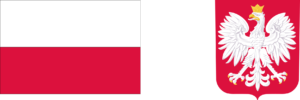Poland says 19 Russian drones violated its airspace overnight on 9–10 September during a wider strike on Ukraine. Polish F-16s, supported by NATO assets, engaged multiple targets; debris from at least 16 drones has since been recovered. One drone struck a house in the village of Wyryki-Wola, causing severe roof damage but no reported casualties. Poland has triggered NATO’s Article 4 consultations and tightened air-traffic rules in the country’s east.
Allied involvement was significant. The Netherlands confirmed its F-35s, operating under NATO air defence, intercepted and shot down several drones over Poland—the first time NATO fighters have downed hostile drones in allied airspace. Reporting and official statements attribute multiple shoot-downs to the Dutch jets.
Authorities have publicly listed locations where drones or debris were found, spanning several voivodeships. These include, in Lublin Voivodeship: Czosnówka, Cześniki, Wyryki (Wyryki-Wola), Krzywowierzba-Kolonia, Wohyń, Wielki Łan, Zabłocie-Kolonia, Wyhalew, and Bychawka Trzecia; in Łódź Voivodeship: Mniszków; in Warmian-Masurian: Oleśno; in Masovian: between Rabiany and Sewerynów as well as Nowe Miasto nad Pilicą; and in Świętokrzyskie: Czyżów, Sobótka, and Smyków.
The political reaction has been immediate. U.S. President Donald Trump posted “What’s with Russia violating Poland’s airspace with drones? Here we go!” on his social platform, and later spoke by phone with Poland’s President Karol Nawrocki to underscore allied unity. European leaders and NATO officials also condemned the incursion.
Domestically, Poland’s air navigation authority imposed temporary restrictions in the eastern airspace corridor along the borders with Belarus and Ukraine, including a ban on civilian drones and limits on small/non-commercial flights; officials indicated the measures could last up to three months if needed.






